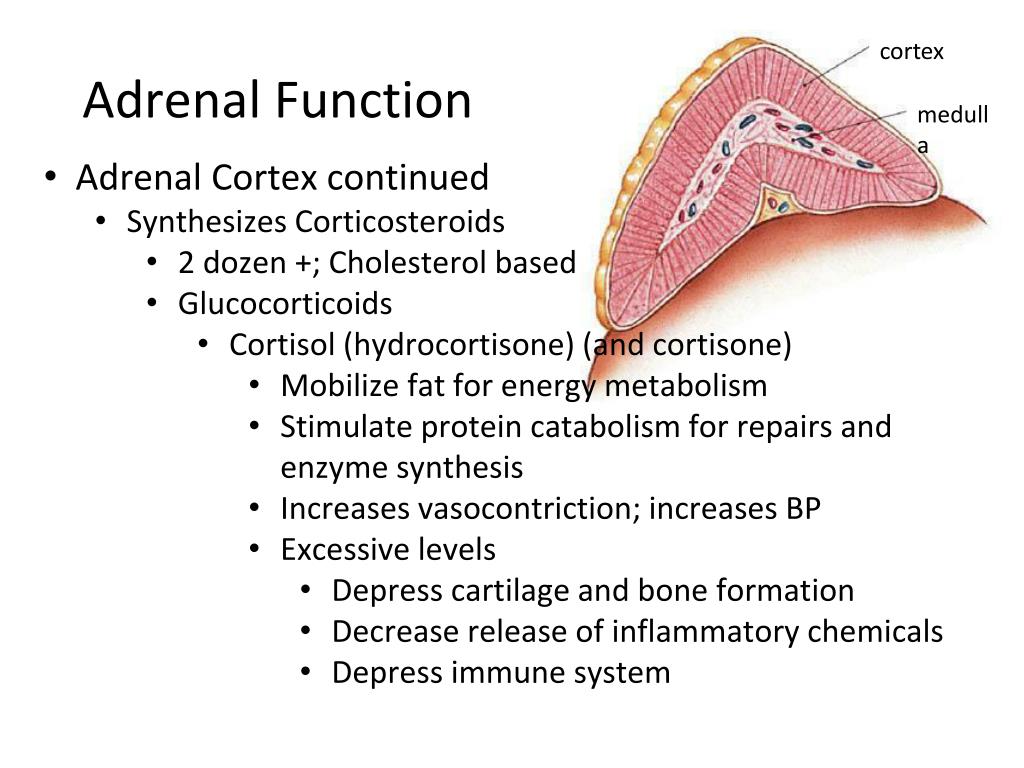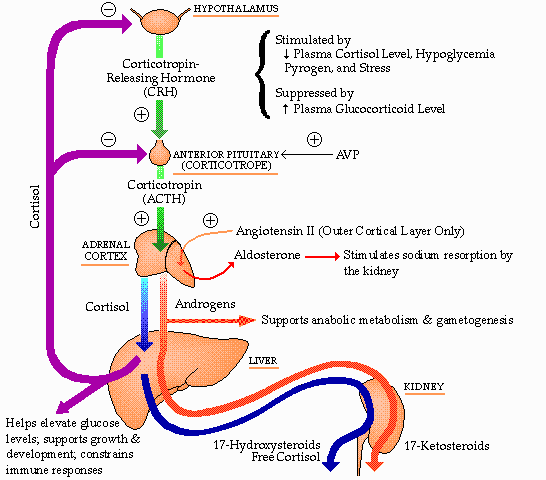

Sodium retention is also a response of the distal colon, and sweat glands to aldosterone receptor stimulation. Aldosterone's effects are on the distal convoluted tubule and collecting duct of the kidney where it causes increased reabsorption of sodium and increased excretion of both potassium (by principal cells) and hydrogen ions (by intercalated cells of the collecting duct). Aldosterone is largely responsible for the long-term regulation of blood pressure. The zona glomerulosa cells express a specific enzyme aldosterone synthase (also known as CYP11B2). The synthesis and secretion of aldosterone are mainly regulated by the renin–angiotensin–aldosterone system.

Zona glomerulosa The outermost layer, the zona glomerulosa is the main site for the production of aldosterone, a mineralocorticoid. This anatomic zonation can be appreciated at the microscopic level, where each zone can be recognized and distinguished from one another based on structural and anatomic characteristics. The adrenal cortex comprises three main zones, or layers that are regulated by distinct hormones as noted below. It is also a secondary site of androgen synthesis. Each zone is responsible for producing specific hormones. It is divided into three separate zones: zona glomerulosa, zona fasciculata and zona reticularis. The adrenal cortex is the outer region and also the largest part of an adrenal gland.


 0 kommentar(er)
0 kommentar(er)
